As you work on planning your self-drive itinerary for Iceland, one thing you may wonder is whether you will need to account for any tolls along the way. Although there are almost no toll roads, there is an Iceland toll tunnel you will need to be aware of so you don’t encounter any unexpected surprises as you enjoy this beautiful country with your RV rental in Iceland. This is all you need to know:
Is There a Tunnel Toll in Iceland?
The quick answer to this question is yes, there is one Iceland tunnel toll you will need to be aware of when planning your route. Tolls in Iceland are relatively rare and have historically been in place for a designated amount of time to cover the cost of creating tunnels that shorten the route between two places.
The Only Toll Tunnel in Iceland: Vaðlaheiðargöng
At the time of this writing, Vaðlaheiðargöng is the only Iceland toll tunnel that currently charges drivers who use it. This tunnel is situated along the Ring Road, just to the east of Akureyri. The tunnel was completed in 2018 and is 7.4 kilometres in length, reducing the drive from Akureyri to Húsavík by 16 kilometres.
The construction of Vaðlaheiðargöng did not go as smoothly as they expected. The tunnel was originally estimated to open in 2016, but encounters with a cold water reservoir and a hot water source slowed progress. Even today, the middle of the tunnel is quite warm due to the presence of geothermal water in the mountain.

Vaðlaheiðargöng Tunnel Toll Prices for 2025
The amount of the toll has increased over the years. As of May 1, 2025, the cost of the tunnel toll is 2,110 ISK for a passenger vehicle. Starting June 1, 2025, however, the toll is set to increase to 2,152 ISK. The tunnel toll applies to each direction and must be paid within 24 hours of the trip. For instance, if you drive to and from Akureyri on the same day through the tunnel, you must pay twice.
How to Pay the Vaðlaheiðargöng Tunnel Toll
Although most parking fees are paid through the Parka app, paying for Iceland toll roads is different. However, it is just as simple. There are no toll booths with machines or personnel to collect the toll. Instead, the tunnel relies on cameras to capture license plate numbers. Visitors can pay the tunnel toll through the Vaðlaheiðargöng website by entering the license plate number.
It is important to make sure you enter the license plate number correctly to avoid extra charges from your rental company. You have 24 hours before or after going through to pay the toll before it is sent to the vehicle’s owner. If you will spend considerable time in the north and plan to go back and forth, you can purchase 10 and 50 trip packages for a discount.
If you are worried about not having an Internet connection while you are out and about, you can easily pay for your tunnel toll before leaving the campground in the morning or when you arrive at your destination in the evening. Anywhere you have the chance to connect to the Internet is a good place to pay your toll before you forget.
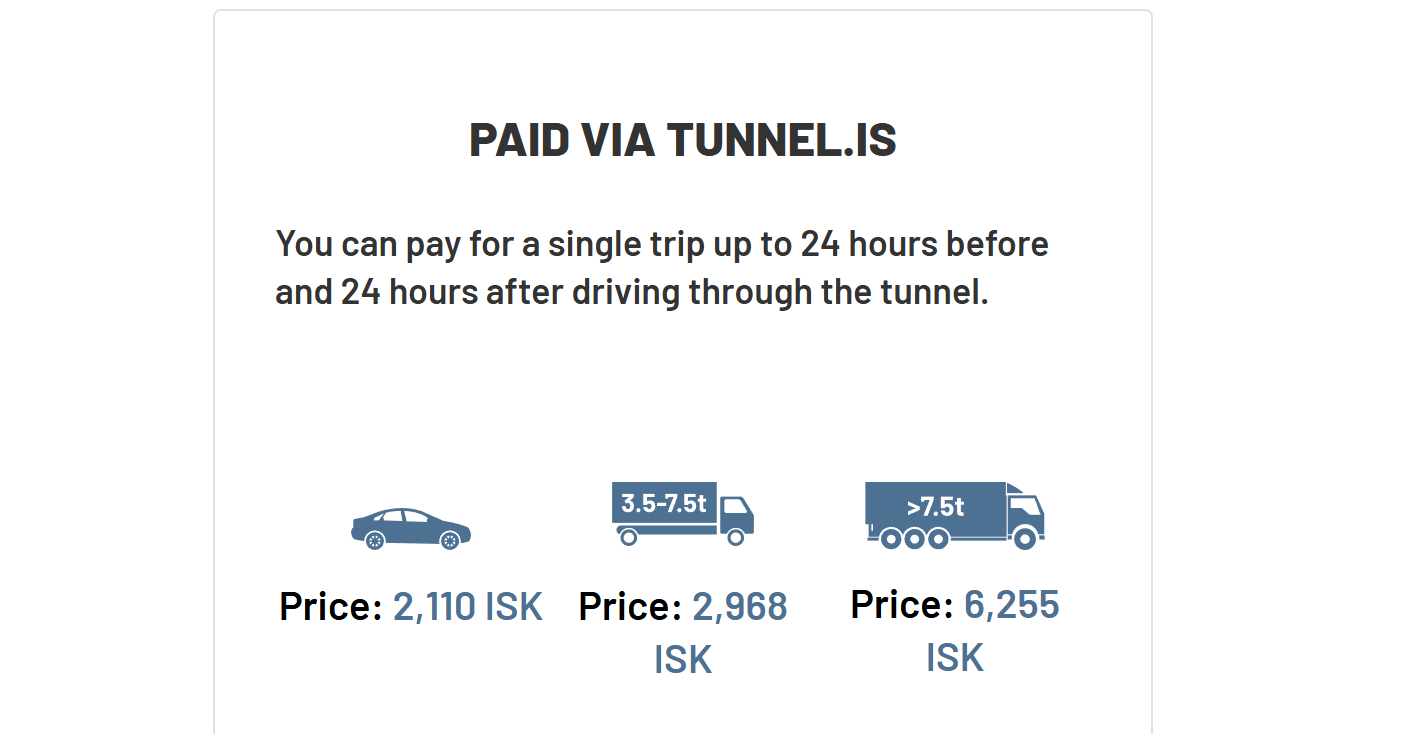
Free Tunnels in Iceland: Where You Can Drive Without Paying
The Vaðlaheiðargöng tunnel isn’t the only tunnel you may encounter during your drive through Iceland. It is, however, the only one that you must pay to use. All other tunnels in Iceland are free of charge, though some of them, such as the Hvalfjarðargöng tunnel north of Reykjavík, once had a toll. These tolls were abolished once the cost of the tunnel was paid for.
Hvalfjarðargöng is one of the most used tunnels in Iceland due to its proximity to Reykjavík and the amount of traffic related to the capital. This tunnel was completed in 1998 and covers approximately 5.7 kilometers. It was built to reduce the length of the Ring Road, shaving 45 kilometers off the trip and saving nearly an hour of drive time.
If you’re sticking to the Ring Road for your self-drive trip, you will encounter a couple of more tunnels along the way, none of which charge a toll. Fáskrúðsfjarðargöng, which opened in 2005, is found in the east and is 5.9 kilometers long. Almannaskarðsgöng is a tunnel in the southeast. This tunnel measures 1.3 kilometers, making the trip much safer, especially in winter.
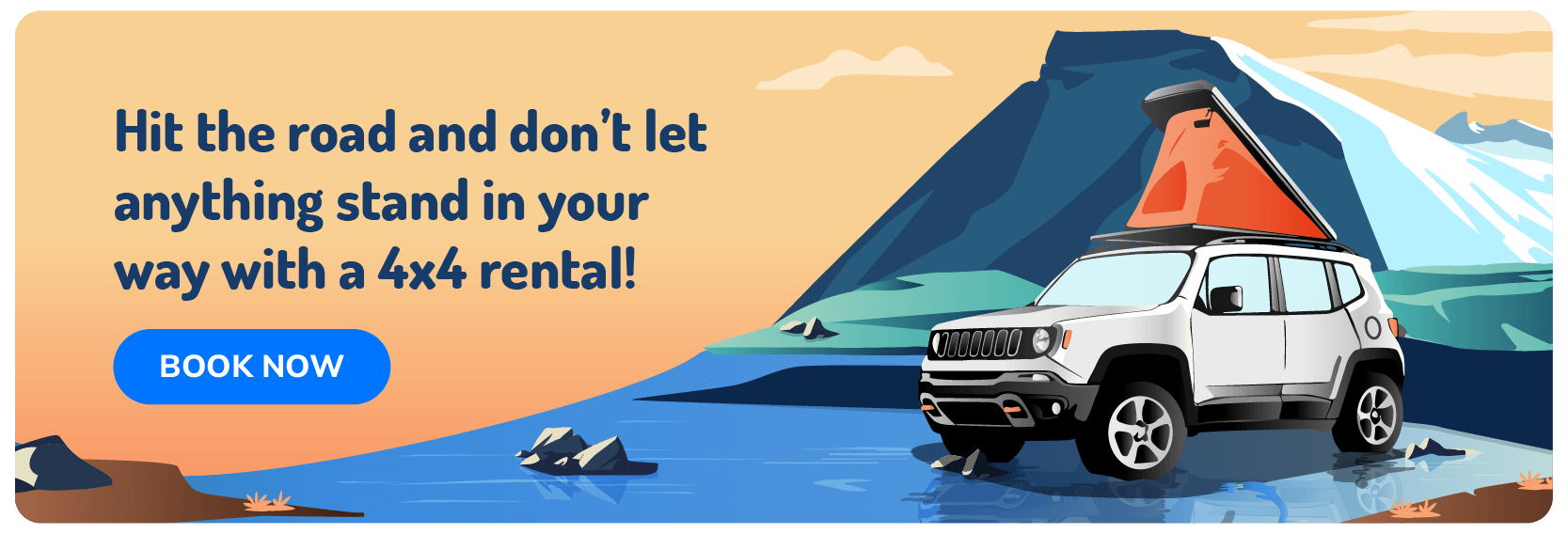
If your itinerary takes you off the Ring Road, you may encounter additional tunnels, some of which are one-way tunnels. When driving through one-way tunnels, pay attention to which side has the pull-out sections. If they are on your side, you must give way to oncoming traffic, so pay close attention. If you see headlights coming, pull to the side to wait.
The other tunnels you may encounter include the following:
- Vestfjarðagöng is a 9.1-kilometer series of one-way tunnels in the Westfjords that opened in 1996.
- Dýrafjarðargöng is a 5.6-kilometer tunnel in the Westfjords opened in 2020.
- Bolungarvíkurgöng is a 5.4-kilometer tunnel in the Westfjords opened in 2010.
- Héðinsfjarðargöng I is a 7.1-kilometer tunnel on the Tröllaskagi Peninsula opened in 2010.
- Héðinsfjarðargöng II is a 3.9-kilometer tunnel on the Tröllaskagi Peninsula opened in 2010.
- Múlagöng is a 3.4-kilometer one-way tunnel on the Tröllaskagi Peninsula opened in 1991.
- Norðfjarðargöng is a 2.9-kilometer tunnel in the east that opened in 2017.
There are several other smaller tunnels you may encounter, some of which have been closed to the public. Another tunnel, Fjarðarheiðargöng, is also being planned in the east between Egilsstaðir and Seyðisfjörður to make the drive safer year-round. It is expected to be completed in 2029.
It is helpful to be aware of where these tunnels are located, especially the one-way tunnels. Some drivers aren’t comfortable with them, but in most cases, there are alternative routes so you can avoid the tunnels altogether, as long as the weather and road conditions allow you to drive. In many cases, tunnels are created to facilitate year-round travel where it was once difficult.
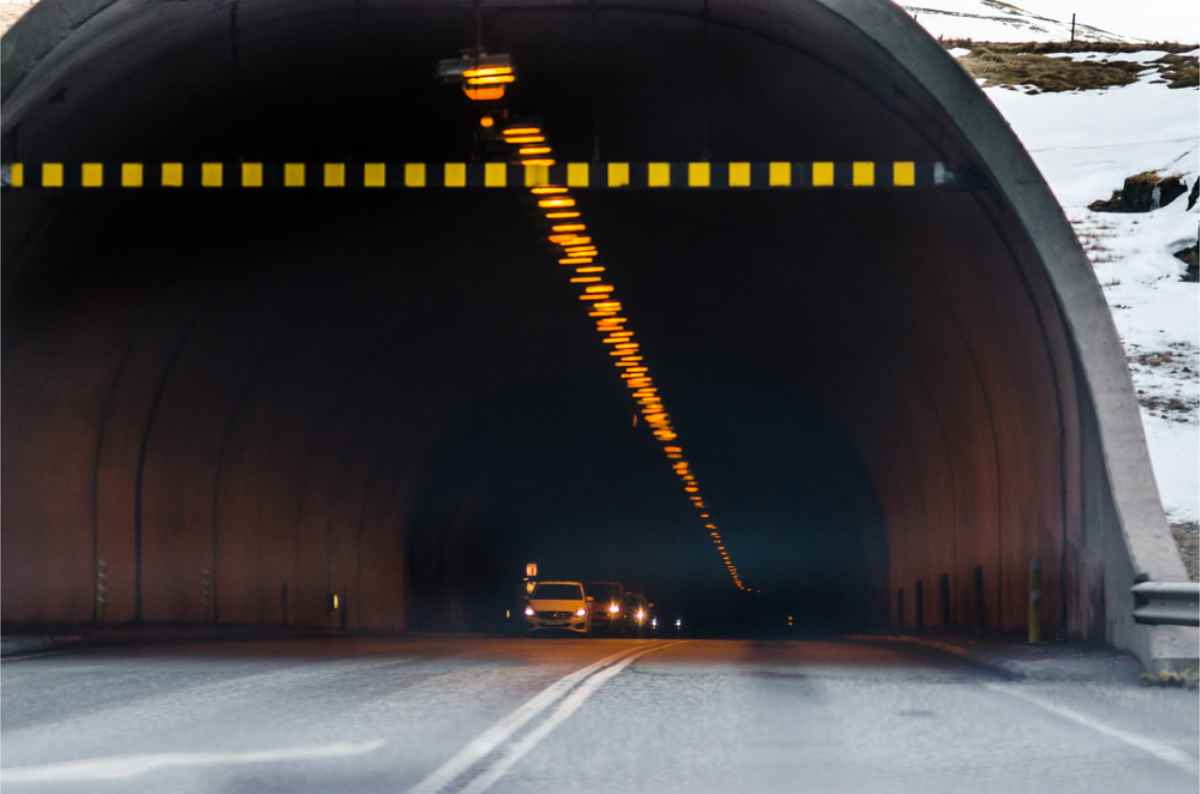
Is the Vaðlaheiðargöng Tunnel Worth It for Camper Travelers?
The next question many visitors have is whether the Vaðlaheiðargöng tunnel is worth it when you’re traveling the Ring Road in your campervan. The answer to this question will vary depending on the time of year you visit, how much time you have, and what your preferences are. The following will help you decide if it’s the best option for you.
Summer vs. Winter Travel: When Taking the Tunnel Makes Sense
One of the most important factors in deciding whether to use Iceland’s tunnel toll road is the time of year you visit. The alternative route to the tunnel is a beautiful mountain road, but in winter, the drive can be quite treacherous. This is why the tunnel was built to begin with. The original road was often closed in the winter, making it difficult or impossible to travel in and out of Akureyri.
However, if you are traveling during the summer months or you get good weather when you’re in the north, you can choose the old route through the mountain pass. This route doesn’t take a lot longer and will reward you with fantastic views you would otherwise miss, saving you money and enhancing your road trip.
Visitors who choose to drive through the tunnel aren’t missing out on a lot, though. You can still see many fantastic sights in the north, even if you decide to save a little time and spend the money to drive through the tunnel. The tunnel itself is an engineering marvel and interesting to see, especially with the extremely warm air in the middle. For many, it’s worth experiencing at least once.
Alternative Routes for Campers and Motorhomes
The primary alternative route for driving your campervan or motorhome around the Ring Road without paying the Iceland tunnel toll is to turn onto route 83 and 84, depending on the direction you are heading. This route was once the Ring Road before the tunnel was built and will take you through a beautiful mountain pass with breathtaking scenery.
Taking the alternative route when the weather allows only adds about 15 minutes to your journey for the day, while saving you the cost of driving through the toll tunnel. While some visitors still choose the tunnel as their preferred way to travel around the north, the choice is yours. As long as you check the road conditions before you go, the alternative route can be a great experience.
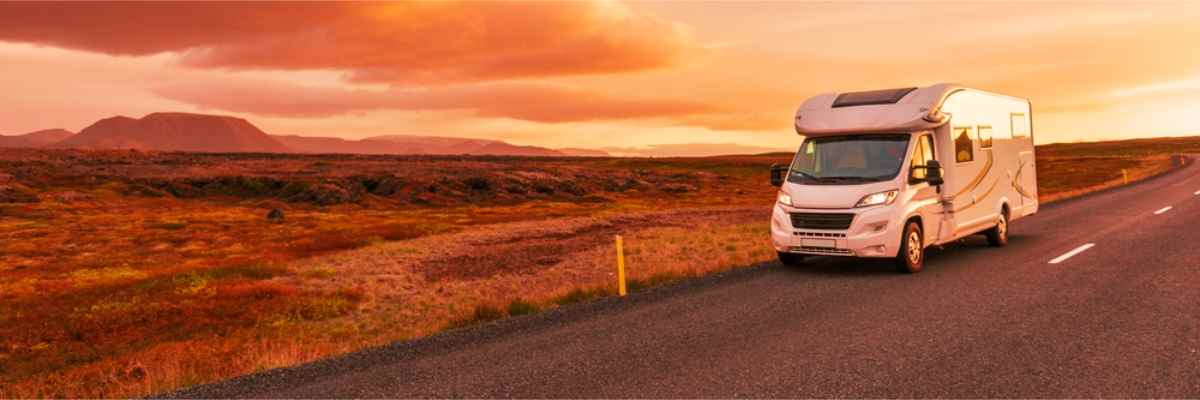
Planning Your Iceland Camper Trip: Budgeting for Road Costs
As you plan your campervan or motorhome trip through Iceland, you will need to budget for more than just campgrounds and fuel. Knowing where Iceland’s toll roads are and how to pay them to avoid fines is crucial to ensuring you don’t get any unwanted surprises along your journey.
Fuel Costs, Road Taxes, and Tunnel Fees for Campers
Budgeting for your self-driving camping trip requires considering a few things. The most important factor is the cost of your fuel. In Iceland, fuel can be considerably more expensive than where you live. You can see how much gas costs in real-time by visiting the GSM Bensin website, which shows current fuel prices.
At the time of writing, road taxes are included in the price of fuel at the pumps. However, legislation is being considered that could change this, removing the road tax from fuel and transferring it to a mileage fee. Your rental company can provide more information if this change takes place.
Finally, tunnel fees are something to consider if you will be driving the Ring Road or spending time near Akureyri. The cost of driving through the tunnel is charged each time you go through it, making it necessary to keep track and be sure you pay the fee promptly to avoid additional charges. It’s best to pay as soon as possible so you don’t forget.
Avoiding Fines: What Happens If You Don’t Pay the Toll?
So, what happens if you forget to pay the toll for the tunnel or choose not to pay? In the end, you will pay more for passing through the tunnel than paying the toll yourself within 24 hours of going through the tunnel. If you pay on the website within 24 hours, you will only need to pay 2,110 ISK per trip (2,152 ISK after June 1, 2025).
If you fail to pay this fee in time, the cost will be charged to the vehicle owner’s bank account. When this occurs, there is an additional 1,490 ISK added to the fee for the collections. This increases the cost to 3,600 ISK (or 3,642 ISK after June 1, 2025), which will be charged to you by the rental company.
However, this isn’t the only increase you will see if your rental agency is charged for the tunnel toll because you didn’t pay for it. Because the rental company will pay the fee from their bank account, they will likely charge an additional service fee to the renter. For this reason, it’s more cost-effective to simply pay the fee, so you don’t have to worry.
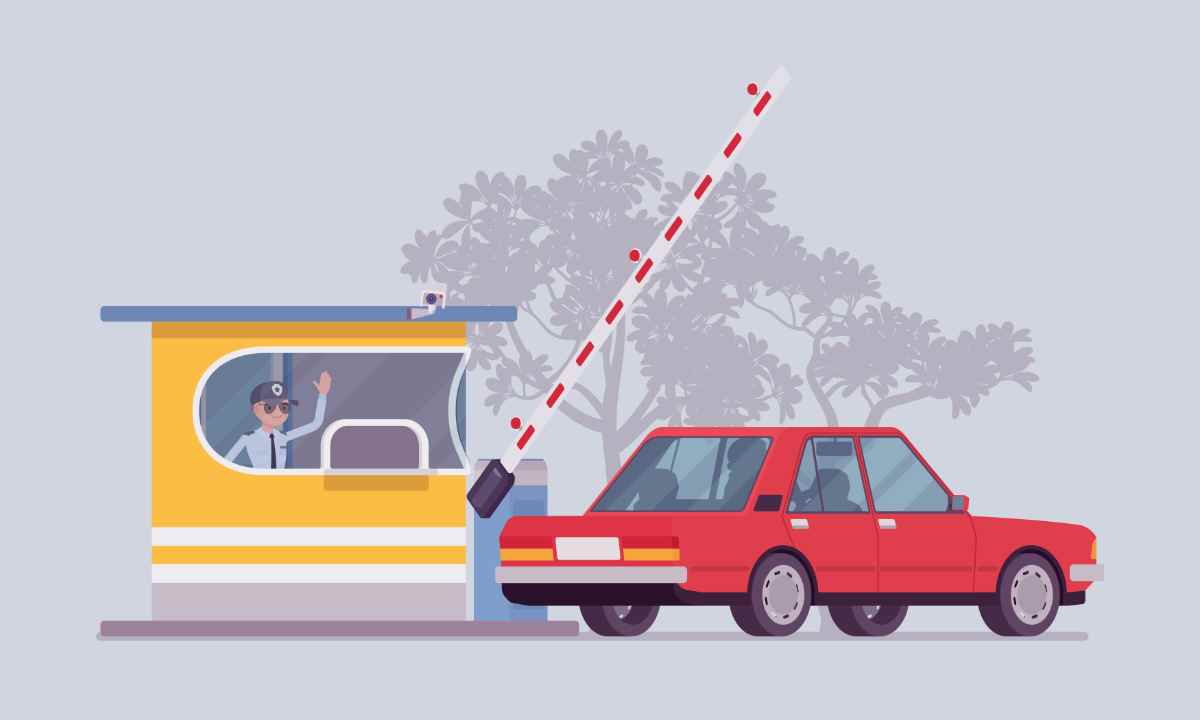
Final Tips for Camper Travelers in Iceland
Self-driving can be one of the best ways to see this beautiful country. It gives you the freedom to choose your routes and see the things you most want to see, spending as much time as you like in each location. However, it also means you need to be aware of the potential costs along the way.
Renting a camper in Iceland is just one of the costs you need to consider. You are likely to encounter parking fees and even Iceland’s only toll tunnel, especially if you are traveling the Ring Road. Knowing how much to expect for these fees and how to pay them will help you budget more effectively and enjoy your vacation without worrying about how much it will all cost.

